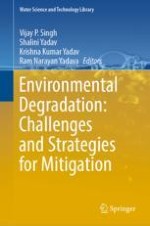2022 | OriginalPaper | Buchkapitel
9. Textile Dye Removal from Industrial Wastewater by Biological Methods and Impact on Environment
verfasst von : H. Gimhani Madhushika, Thilini U. Ariyadasa, Sanja H. P. Gunawardena
Erschienen in: Environmental Degradation: Challenges and Strategies for Mitigation
Aktivieren Sie unsere intelligente Suche, um passende Fachinhalte oder Patente zu finden.
Wählen Sie Textabschnitte aus um mit Künstlicher Intelligenz passenden Patente zu finden. powered by
Markieren Sie Textabschnitte, um KI-gestützt weitere passende Inhalte zu finden. powered by
